Pot Belly Wood Burning Stoves Review
- October 17, 2023
- 2 comment
Pot belly wood burning stoves are reminiscent of a bygone era. They instantly transport one to memories of old railway cars, train stations, or cozy, rustic cabins. With a warmth and cheeriness that is unmistakably their own, they stand as a testament to the ingenious designs of the past. Let’s dive deep into the history, design, and evolution of these iconic stoves.
A Brief Journey Through Time
Wood stoves changed a lot in the past years. New technology made many old stoves outdated. But the pot belly stove remained popular. It’s easy to spot because of its round middle, looking a bit like a person’s belly. Made of heavy iron, these stoves burn wood and give off a lot of heat. They come in different sizes. Some small ones are perfect for a room, while big ones can heat a large hall.
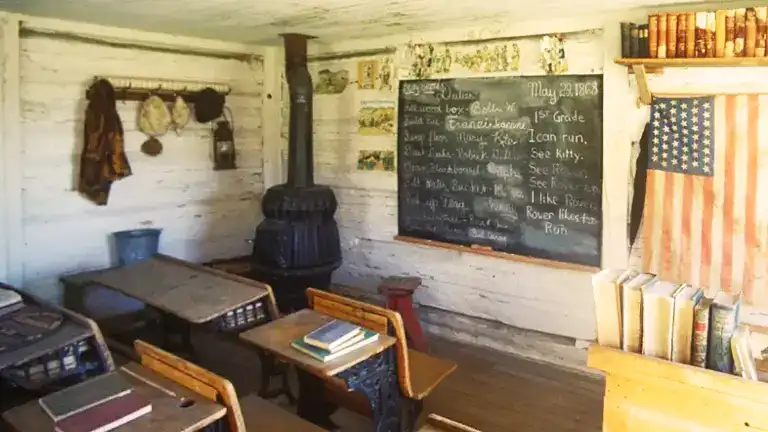
These stoves usually stand on legs and have a pipe to let the smoke out. They have a door to put wood in and another to clean out the ashes. There’s a control to change how much air gets in, which affects how it burns. Many people liked them, so companies made different types. Some had a cooking spot on top. This was useful in schools where teachers would make lunch for students. Others had a safety ring to prevent people from getting burnt if they touched it. Some fancy ones even had special decorations.
In short, even as times changed and new stoves came out, the pot belly stove stayed loved. It was both useful and looked good. Over time, makers added features like racks to make them even more handy.
Why Did Pot-Belly Stoves Disappear?
In the past, before the sleek wood stoves we see today, the pot-belly stove was a big deal. It had a round, belly-like shape and could burn both wood and coal. These stoves were everywhere in the 1900s, and many people still remember them fondly.
But, why don’t we see them as much anymore? The main reason is the EPA, a government agency that makes rules to keep our air clean. They made strict rules about how much smoke a stove can produce. The pot-belly stoves didn’t meet these new rules.
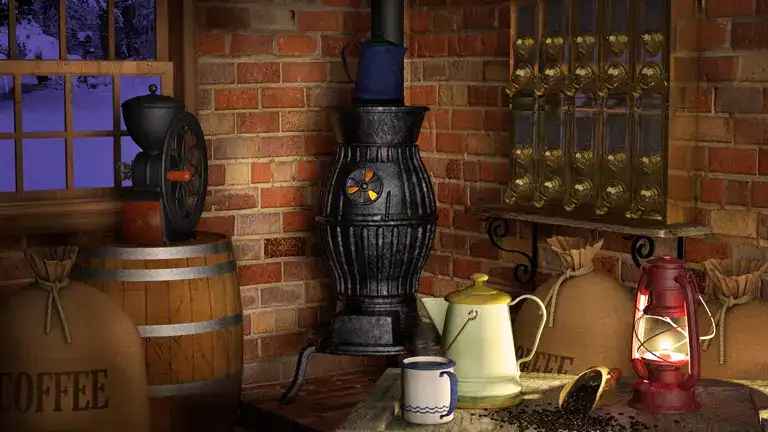
On top of that, as houses and buildings got updated, there were new rules about where and how you could install these old stoves. Some insurance companies also didn’t want to cover houses with these old stoves because they saw them as risky.
And lastly, people’s tastes changed. They started wanting wood stoves that looked modern and had big glass doors so they could see the fire. Brands started making these new designs instead of the old pot-belly style.
So, while we might still see a pot-belly stove in an old movie or at an antique store, they aren’t common anymore because of new rules and changing tastes. But if you ever find one, it’s a cool piece of history!
Signature Design Elements
The pot belly stove, renowned for its distinctive bulbous shape and widened mid-section, epitomizes a harmonious blend of aesthetics and functionality. Its design ensures optimal heat distribution, with the broadened mid-section enhancing surface area for more effective warmth. As heating needs evolved, this signature design was ingeniously integrated into larger wood cook stoves, leading to the inception of the parlor wood burning stove. This evolution showcased a beautiful synthesis of the pot belly’s iconic efficiency with a broader surface tailored for culinary applications.
Manufacturers like Glenwood played a pivotal role in elevating the pot belly design, blending its classic elements with opulent chrome additions to inject modernity. Similarly, the Clermot #136 is a testament to design adaptability, imbibing the core aesthetics of the pot belly while embracing intricate advancements, highlighting the timeless and versatile appeal of the original pot belly blueprint.
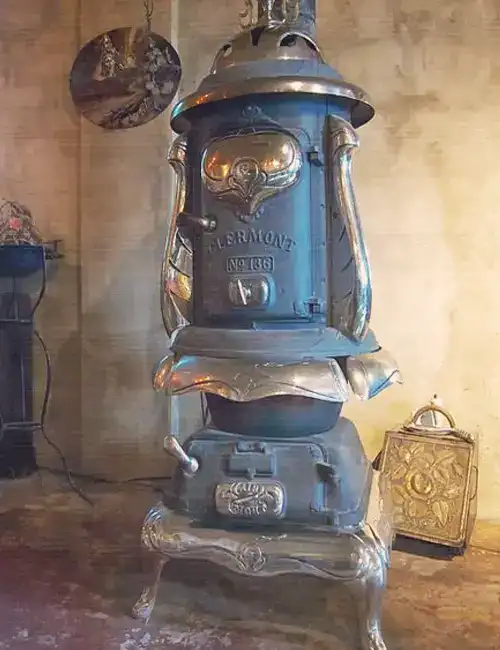
The Science Behind The Heat
A key feature of the modern versions of pot belly stoves, like the Thelin Parlor T4000, is the reburn chamber. This chamber facilitates secondary combustion, ensuring a more complete burn of the wood and its gases. This not only enhances the heat output but also minimizes the risk of chimney fires.
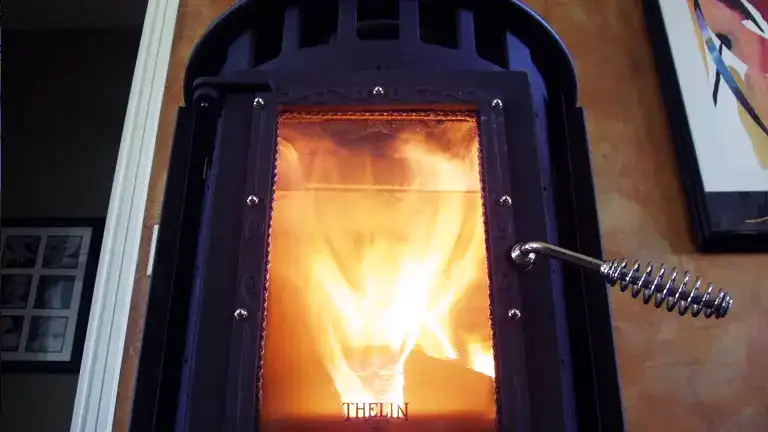
Modern wood stoves have leveraged this technology to produce less pollution and offer greater efficiency. The elevated temperature of secondary combustion, compared to the primary burn, ensures lesser particulate emissions.
Brands Selling Pot Belly Wood Stove
While many pot belly wood stoves found today are vintage or antique, some companies still manufacture or sell variants inspired by the classic design. Here are some brands known for pot belly stoves or stoves with a similar aesthetic:
- US Stove Company: They offer models like the US Stove 2469E, which bears a resemblance to the classic pot belly design but with modern features.
- Vogelzang: They have stoves reminiscent of the pot belly aesthetic, though they may not be true pot belly designs.
- Ashley Hearth Products: Known for a variety of wood and coal stoves, some of which harken back to older designs.
- Drolet: While more known for their modern designs, some of their stoves carry the classic charm of older times.
- Jøtul: This brand, with its long history, offers a variety of designs, some of which are inspired by classic aesthetics.
- Hearthstone: Known for their cast iron and soapstone stoves, some models may appeal to those seeking a vintage look.
- Vermont Castings: While their focus is on modern efficiency, the timeless design of some models might remind one of older stove styles.
- Stanley: Particularly in regions like Ireland, Stanley has been a known brand for classic stove designs.
It’s worth noting that while these brands might offer stoves that are reminiscent of the pot belly design, they may not sell true pot belly stoves. If you’re keen on getting an authentic, vintage pot belly stove, antique stores, estate sales, or specialty retailers might be your best bet. Always ensure that any stove, vintage or modern, meets current safety standards and regulations before installation and use.
The Importance of Caring for and Restoring Potbelly Wood Stoves
If you own a potbelly wood stove, it’s essential to maintain and restore it properly to ensure its longevity and safety. First and foremost, inspect the stove’s main components like the firebox, the grate, and the stovepipe. If you spot any cracks, warping, or gaps, it’s vital not to light the stove. Such issues can pose significant safety risks, and it’s best to consult a professional stove restorer to assess and repair any damages.

Being made of cast iron, potbelly stoves are prone to rust. To safeguard against this, ensure the stove is kept away from moisture and water. If rusting does occur, especially if it’s minor, you can use steel wool or a wire brush attached to a drill to scrub it off.
For stoves that aren’t painted but need some freshening up, black stove polish or paste is your go-to. It’s readily available at local hardware stores. Apply the polish and then light the stove to help set it. However, if your stove isn’t in a condition to light a fire, using enamel paint is a suitable alternative. But remember, don’t use enamel paint on a stove you intend to light, as the paint can peel off with the heat and emit a strong odor.
If your potbelly stove has nickel elements, cleaning them can be tricky. A professional stove restorer can provide guidance on cleaning or even re-plating. Moreover, if you have missing or severely damaged parts, many restorers offer replacement pieces to bring your stove back to its former glory. Taking the time to care for and restore your Potbelly wood stove ensures it remains a functional and aesthetic centerpiece in your space.
Benefits of Pot Belly Stoves
Beyond the iconic design and rich history, pot belly stoves offer a multitude of benefits that have contributed to their enduring appeal:
- Efficiency: The design of the pot belly stove focuses on maximizing heat output from a minimal amount of fuel. Its compact size and structure radiate heat effectively, warming up spaces quicker than many other traditional heating methods.
- Versatility in Fuel: One of the major advantages of pot belly stoves is their ability to burn both wood and coal efficiently. This flexibility allows users to choose their fuel source based on availability and preference.
- Cooking Capability: Many pot belly stoves come equipped with a flat top surface, which can be used for cooking. This multifunctionality means that in addition to heating a space, they can be utilized to prepare meals — a valuable feature, especially during power outages or in off-grid settings.
- Nostalgic Appeal: There’s an undeniable charm to pot belly stoves. Their unique design and the memories they evoke make them more than just functional appliances. They serve as conversation pieces, connecting generations through shared stories of times spent around the warm glow of the stove.
A Modern Take on A Classic Design
The pot belly stove’s timeless design has been reimagined for modern homes. While maintaining its classic shape and charm, new models, like the US Stove 2469E, have upgraded features. This EPA-certified stove combines the best of both worlds: the nostalgic beauty of the pot belly design and modern efficiency standards. Not only is it eco-friendly, but it also offers improved heating capabilities. Such modern takes on the classic design ensure that the pot belly stove remains relevant and cherished, even in contemporary settings.
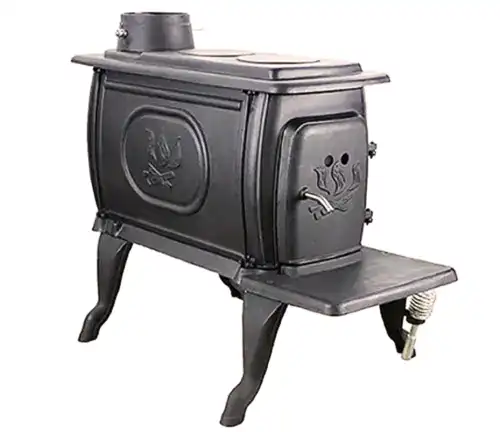
How to Remove Rust in Vintage Cast Iron Wood Stove
- After each use, remove the ash, ensuring it’s cool before disposal. If your stove has a glass door, clean it with a wood stove-specific glass cleaner to maintain clarity.
- Periodically inspect the stove for cracks or other signs of wear, especially in the body, legs, and flue, addressing any issues promptly.
- Clean the chimney and flue at least once a year to prevent creosote build-up, a common cause of chimney fires. Consider hiring a professional chimney sweep for this task.
- Regularly inspect the door gaskets. If they become loose or show wear, replace them to maintain an efficient burn and prevent unwanted drafts.
- Wipe down the stove’s surface with a soft cloth to remove dust. For a deeper clean, use a damp cloth. When the stove is cool, occasionally polish the cast iron with stove polish to protect against rust.
- To prevent rusting, keep the stove dry. If rust spots appear, use steel wool to remove them and touch them up with high-temperature stove paint.
- Make sure the room is well-ventilated, aiding in efficient combustion.
- Before the heating season starts, give your stove a thorough check and clean. At the season’s end, clean out ash and ensure there’s no moisture inside, leaving vents slightly open for airflow.
Conclusion
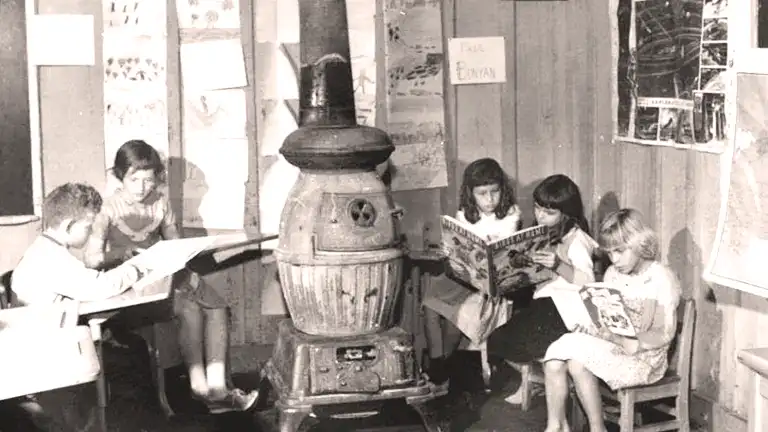
The pot belly stove is a symbol of a bygone era, deeply rooted in our cultural history. Over the years, these stoves have undergone significant transformations, adapting to the demands of an ever-evolving consumer market. Their distinctive bulbous shape, combined with unique design features, has made them both an efficient heating solution and a cherished aesthetic element in homes. Moreover, the benefits they bring, such as heating efficiency, flexibility in fuel choice, and their dual use as cooking surfaces, amplify their appeal. In essence, the pot belly stove is not just a relic of the past but a testament to versatile and efficient home heating solutions. Its legacy, which harmoniously fuses utility and nostalgia, continues to resonate with generations, proving that this iconic stove is truly timeless in design and function.
Related Articles:
- Best Potbelly Stoves 2023
- How To Deal With Backdraft Issues in Wood Stoves and Fireplaces
- Choosing the Right Wood Stove for Your Off-Grid Cabin: A Size Guide
- 10 Commandments of Wood Burning Stoves: A Guide to Eco-Friendly and Efficient Usage
FAQs
- Why is it called a “pot belly” stove?
The stove gets its name from its distinct round, bulging middle, reminiscent of a potbelly. - Were potbelly stoves only used for heating?
While primarily used for heating, many also had a flat top surface that could be used for cooking, making them multifunctional. - How did train stations and schools utilize pot belly stoves?
Many train stations and one-room schoolhouses employed pot belly stoves for warmth, and teachers sometimes cooked meals for students on them. - Why are some potbelly stoves decorated with nickel or chrome?
While many potbelly stoves were plain, some upscale versions added nickel or chrome decoration as a sign of luxury and craftsmanship. - Is it true that potbelly stoves can burn both wood and coal?
Yes, many traditional potbelly stoves were designed to burn both wood and coal, offering versatility based on available fuel. - What makes the potbelly stove’s design efficient for heat radiation?
The round and compact design of potbelly stoves allows them to radiate heat in all directions, warming up spaces efficiently. - How did potbelly stoves contribute to community gatherings in the past?
Being a primary source of heat, potbelly stoves often became communal gathering points in general stores, train stations, and other public spaces, fostering community interactions. - Is it possible to use modern chimney systems with vintage pot belly stoves?
While possible, it’s essential to ensure that the stove and chimney system are compatible and meet modern safety standards. - Do pot belly stoves add value to a home as an antique?
While they can add a nostalgic and aesthetic charm, it’s crucial to ensure they are functional and safe if intended for use. - How do modern potbelly stoves compare in terms of efficiency and emissions?
While retaining the classic aesthetic, many modern variants incorporate advanced combustion technologies, making them more efficient and eco-friendly.
Hey there, fellow stove enthusiasts! We’ve had a blast journeying through the world of Pot Belly Wood Burning Stoves. These stoves sure bring back memories and cozy feelings, don’t they? Now, we’d absolutely love to hear from you. Maybe you’ve got a fun story or a personal review about these iconic stoves. Drop them in the comments! And if this piece stirred a warm memory or two, why not share it with your buddies? Let’s keep the cozy chats rolling!

David Murray
Forestry AuthorI'm David Murry, a forestry equipment specialist with a focus on chainsaw operation. With over 13 years of experience, I've honed my skills in operating and maintaining a wide range of machinery, from chainsaws to log splitters. My passion for the outdoors and commitment to sustainable forestry drive my work, which emphasizes safety, efficiency, and staying updated with industry advancements. Additionally, I'm dedicated to sharing my expertise and promoting environmental awareness within the forestry community.
2 comments
How much $ ?



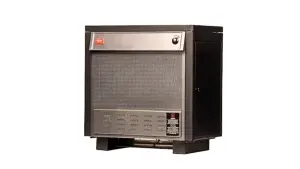


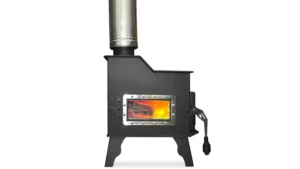




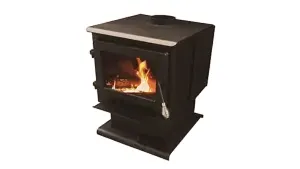

I'm selling one it's really cool very efficient I used it twice but I just leave the money and it seems like there are none available so hit me up I'm in Joshua tree California local deliveries only well within reason!! mine is identical to the second picture in the article. 1499star@gmail.com
Celeste
January 15, 2025 2:28 am